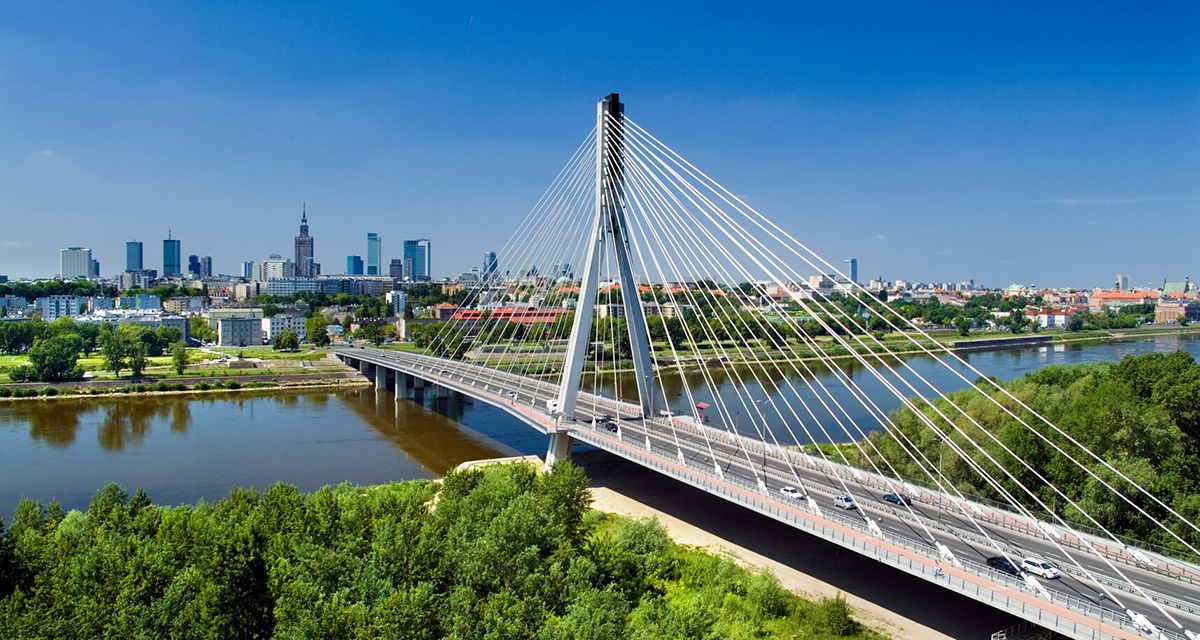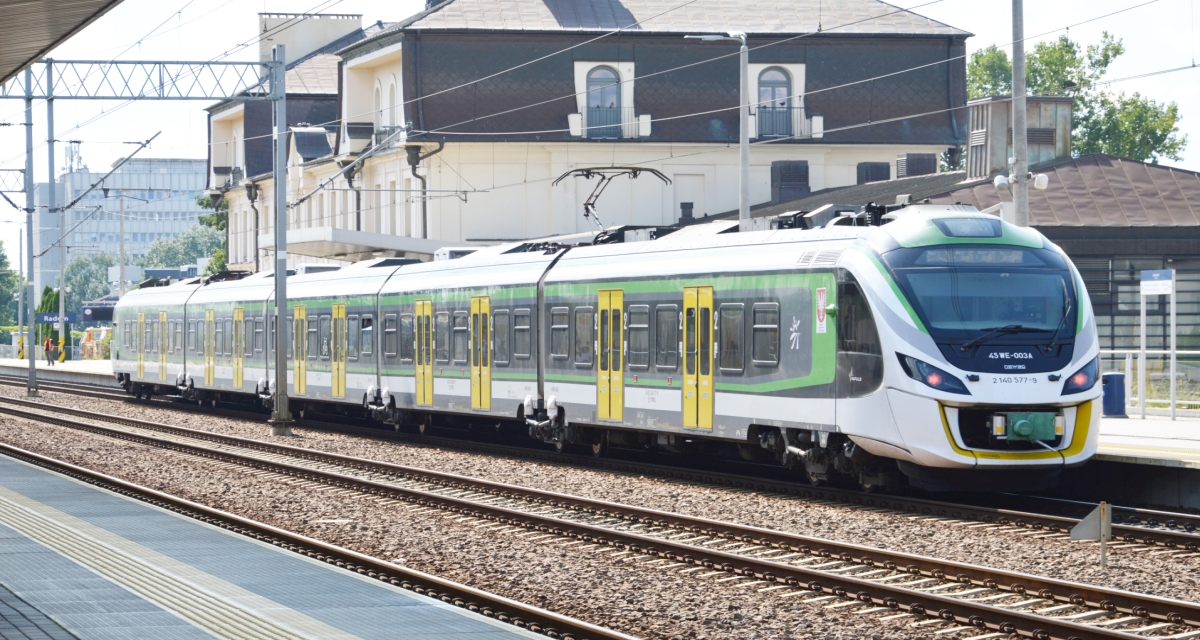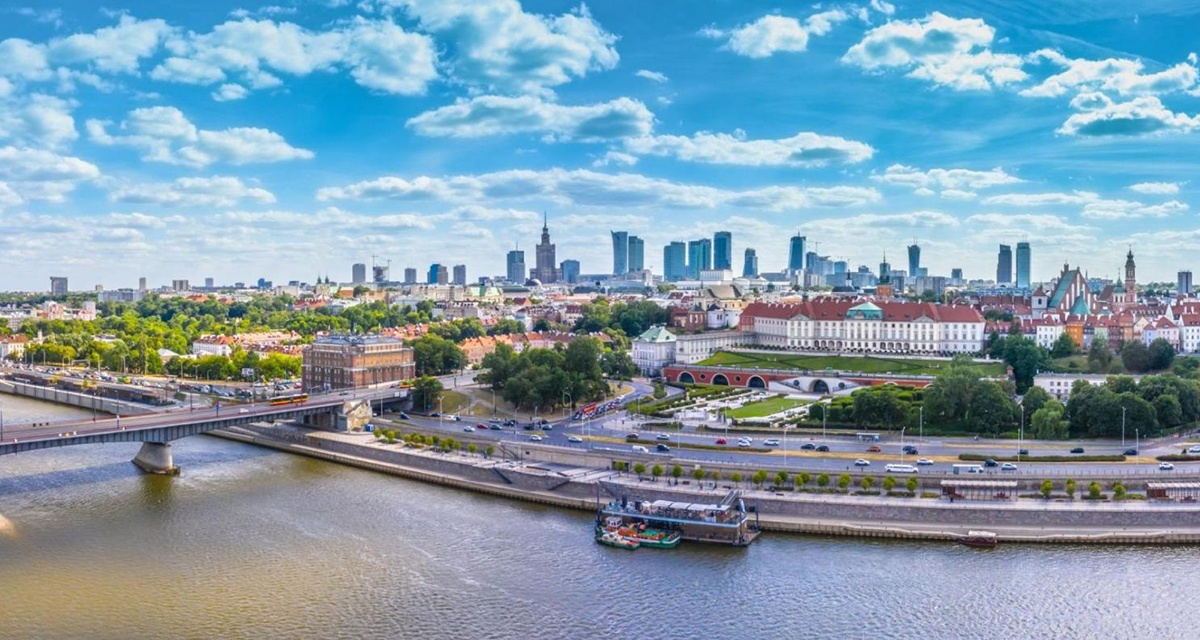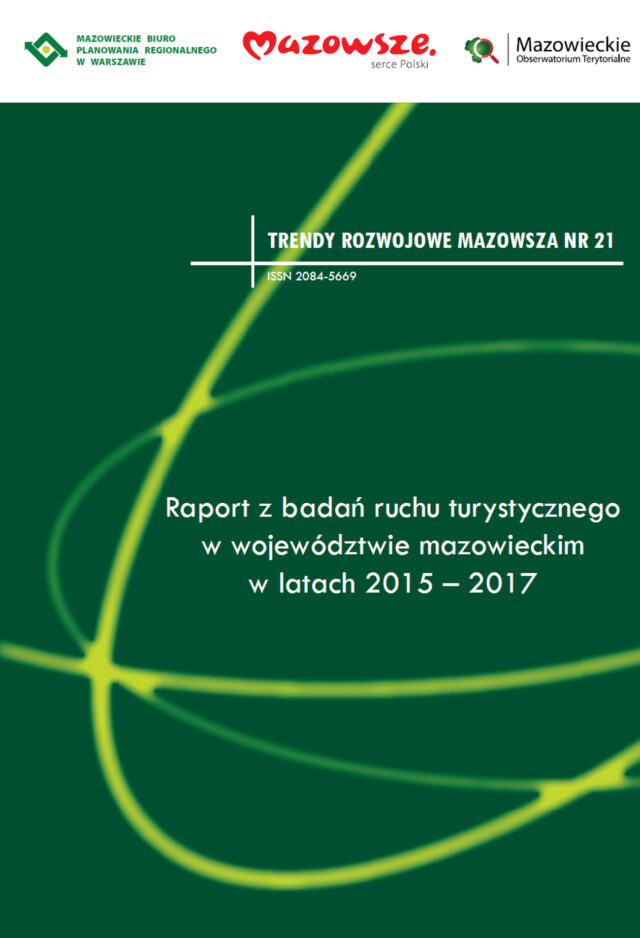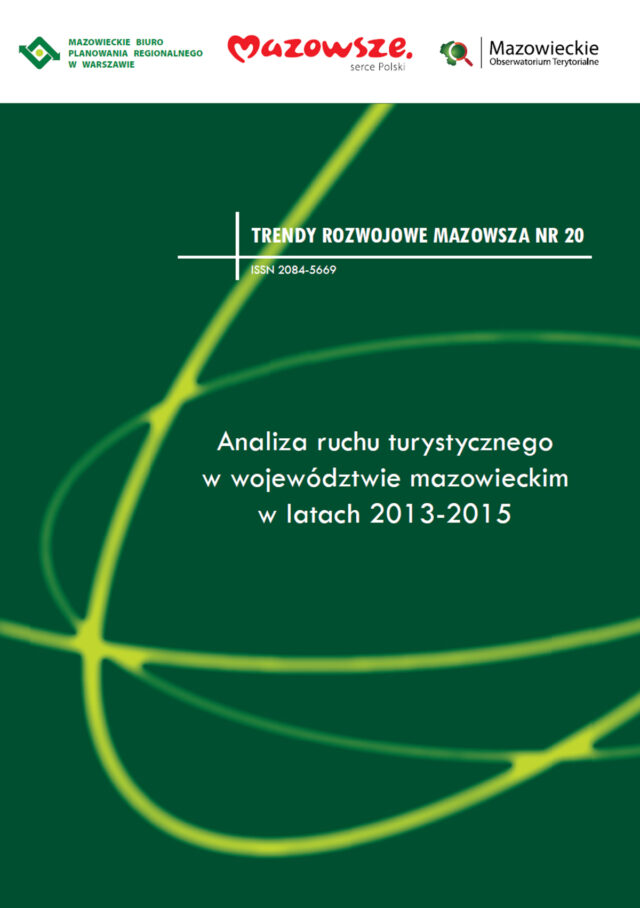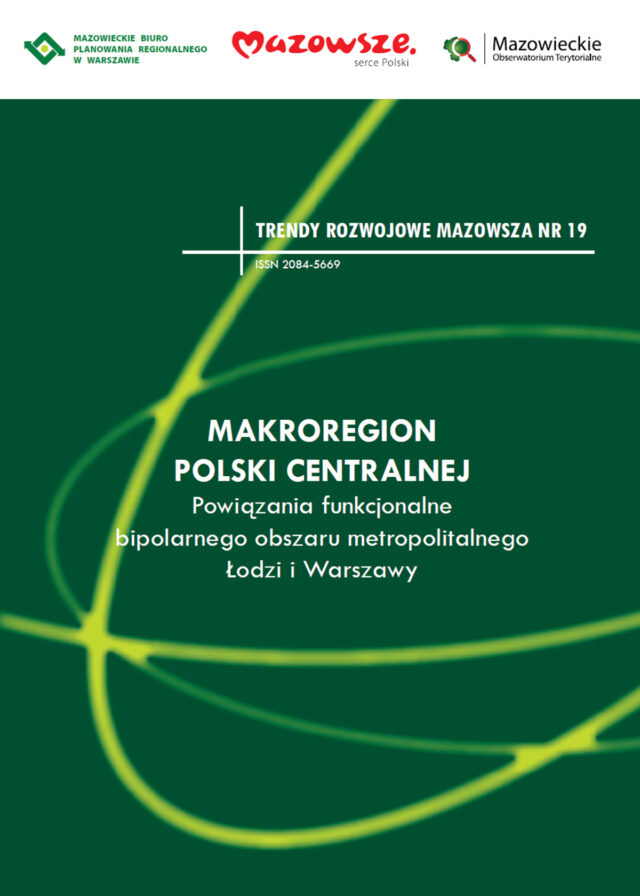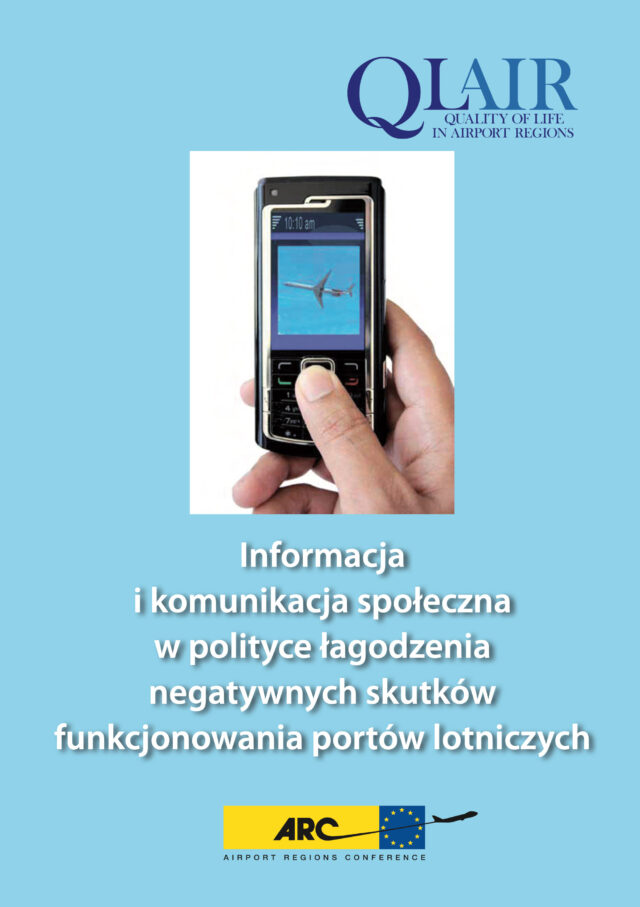MBPR
Mazovian Office of Regional Planning
is a unit of the Mazovian Voivodeship Self-Government participating in work in the field of regional policy and spatial development.
Among other things, the Office prepares spatial development plans and strategies for the development of the Mazowieckie Voivodeship and the Warsaw Metropolitan Area, and is responsible for the development and implementation of projects financed by European Union funds
News
-
Bicycle infrastructure standards and concept of bicycle routes of the province adopted by the Board of the Mazowieckie Voivodeship.
The Board of the Mazovian Voivodeship, mindful of the need to implement a coherent network of functional bicycle infrastructure within the voivodeship, adopted the following on June 28. Bicycle infrastructure standardsand the concept of bicycle routes indicated for implementation in the perspective until 2030 in the Mazowieckie Voivodeship. The document was prepared by the Mazovian Regional Planning Office in Warsaw.
The standards specify the conditions for effective planning, design and execution of bicycle infrastructure. They are based on examples of good practice and an analysis of problems faced by bicycle traffic in Poland.
The document also implements the provisions of the Spatial Development Plan of the Mazovian Voivodeship, which preliminarily defined a backbone network of bicycle routes based on routes of international, supra-regional and regional scope. In the Concept of bicycle routes indicated for implementationin the perspective until 2030, the routes providing connections of the Mazowieckie Voivodeship with routes of international and supra-regional range, as well as service to Warsaw and all sub-regional centers were detailed.and all sub-regional centers.
The standards should be attached to the specification of essential terms of the contract (ToR) in ordersand contracts for preparatory and construction works affecting cycling conditions in the province. This applies both to investments implemented by the Mazowieckie Voivodeship Self-Governmentand its subordinate units (such as the Mazovian Voivodeship Road Administration), as well as those implemented with the support of funds distributed by the Voivodeship Government, including European Funds for Mazovia. Thus, compliance with the Standards should be ensured in the case of investments in infrastructure for cyclists financed with funds at the disposal of the Mazovian Voivodeship.
The Standards apply to: construction and reconstruction of bicycle routes and their components, including roads for bicycles, pedestrian and bicycle trails, roads without separate bicycle infrastructure and pedestrian areas with permitted bicycle traffic, as well as traffic lights and engineering facilities – footbridges, tunnels and bridges. It is recommended that the Standards be applied during railroad and embankment projects, infrastructure with high potential for bicycle routes.
Due to the universal nature of the Standards, they can also be used by municipalities and counties of the Mazowieckie Voivodeship as guidelines for the design and construction of bicycle infrastructure not co-financed by the voivodeship government. For this purpose, they will be provided to all local government units in the province.
Bicycle infrastructure standards and the concept of bicycle routes indicated for implementation in the perspective until 2030 in the Mazowieckie Voivodeship are available in electronic version as an attachment to Resolution 1100/333/22 of the Board of the Mazowieckie Voivodeship and on the website of the Mazowieckie Regional Planning Office. You will soon be able to get acquainted with the course of the routes in the “Geoportal – Integrated monitoring of spatial development of the Mazowieckie Voivodeship” tab.
-
Voting in the Mazovia Citizens’ Budget begins on Wednesday, June 8. It will be the residents of the capital and surrounding areas who will decide which projects will be implemented.The Mazovian local government has allocated PLN 25 million for the implementation of the winning projects.
Among the projects selected for voting are educational and artistic workshops for childrenand adults, construction of bicycle paths, preventive training in improving driving techniques, purchase of ambulances and hospital equipment, modernization of sidewalks and many others.
The deadline for voting is June 30.
Mazovian residents can choose from 174 projects qualified for voting.
47 projects from the province-wide pool27 projects with positive evaluation from the Radom subregion21 projects with positive evaluation from the Plock subregion17 projects with positive evaluation from the Siedlce subregion16 projects with a positive evaluation from the Warsaw West subregion13 projects with a positive evaluation from the Ciechanów subregion11 projects with positive evaluation from the eastern Warsaw subregion9 projects with positive evaluation from the Ostroleka subregion8 projects with positive evaluation from the Zyrardowski subregion5 projects with positive evaluation from WarsawA list of projects eligible for voting on the Mazovia Citizens’ Budget website.
More information on the page of the Civic Budget of Mazovia.
-
Clean air in Mazovia is our common goal, the achievement of which will undoubtedly be accelerated by the amendment of the provisions of the current anti-smog resolution adopted by the Mazovian Regional Parliament. The amendment introduces a ban on burning coal in Warsaw starting in October 2023. In turn, at the beginning of 2028, the provision will also come into force in the counties of the suburban “ring road”.
What will change?
The most important changes relate primarily to:
The resolution’s introduction of a ban on hard coal and solid fuels produced using it: as of October 1, 2023, within the administrative boundaries of the city of Warsaw;As of January 1, 2028, within the administrative boundaries of municipalities comprising the districts of Grodzisk, Legionowo, Minsk, Novodworski, Piaseczynski, Pruszkowski, Otwock, Warsaw West and Wołomin. Introduce a ban on the operation of solid fuel (including biomass) boilers in newly constructed buildings for which an application for a building permit or notification was submitted after January 1, 2023, if there is a technical possibility of connecting the building to a district heating network, which is located in the area directly adjacent to the investor’s plot on which the installation is located.Introduce exemptions in the resolution for coal-fired boilers operated within the boundaries of counties located in the NUTS2 area – Warsaw Capital Region – coal-fired boilers installed before June 1, 2022 will be allowed to operate until the end of their useful life.Leave the possibility of using class 5 coal boilers until the end of their life.All additional information on the current anti-smog resolution and its amendments can be found on the Mazovia website under the “Anti-smog Resolution” tab.
-
This is the fourth edition of the “Start from Mazovia” competition, aimed at Mazovian start-ups that create innovative ideas and products and have been operating for no longer than 3 years. Companies that take partin the competition have a chance to win prizes with a total value of PLN 90,000, as well as gain valuable contacts, promote their ideas through various communication channels and publicity in industry media.
Who can apply to “Startup from Mazovia”?
The competition is dedicated to start-ups registered in the Mazovia province and operating no longer than 3 years from the date of the competition announcement.The competition is decided in the following categories:
INNO-TECH – for start-ups that create new products and processes and significant technological changesin products and processes, including product, process, system innovations; for a start-up in the growth phase at the sales stage;SOCIAL IMPACT – for a start-up with a positive environmental or social impact, regardless of the stage of development;START – for a start-up that creates an innovative project that is at the Minimum Value Product or prototype stage, which is likely to grow and scale effectively.What does participation in the competition provide?
Assistance in development and, above all, financial support at the beginning of the business road is the dream of many entrepreneurs. Participation in the Mazovian competition gives much more! The total prize pool is PLN 90,000, and additionally it is also a chance to win special prizes from the competition’s Partners, including: substantive consultations related to business development and raising financing, the opportunity to participate inin training and mentoring programs, or presentation before a group of investors. Startups can also count on gaining business contacts, promotion of their idea in the media or a professional photo session.
-
The cross visit of the Project Partners from Slovenia to Mazovia region took place on 15-16th June 2018. On Friday 15th June there was a meeting with the Regional Stakeholder Group in the Centre of Culture and Art in Sierpc. Its aim was the exchange of the experiences between the Project Partners and presentation of the part of the cultural heritage of Mazovia region. During the meeting a lecture on the history of the brewery in Sierpc took place, followed then by the discussion on how to involve youth in cultural heritage and craft. After the meeting the guests could visit the Muzeum of Mazovian Countryside in Sierpc. On Saturday 16th June the visit continue including participation in the I Festival of Home Brewers in Warsaw. During the Festival project YouInHerti was presented. There was a project stand, where the detailed information on the project was given and some thematic competitions held. The participants of the Festival could know better the traditional methods of brewing, presented by the best experts in this field. They could also listen to thematic lectures related to YouInHerit project and vote for the best project and the best festival stand.
Cross visit of Partners from Slovenia to Mazovia Cross visit of Partners from Slovenia to Mazovia Cross visit of Partners from Slovenia to Mazovia Cross visit of Partners from Slovenia to Mazovia – gallery -
The second edition of trainings related to the implementation of the Pilot Action within the YouInHerit project, entitled Practical aspects of traditional beer brewing. Interpersonal skills. Public Speeches, took place in Sierpc on 25-26th April 2018. They were attended by representatives of local institutions: the mayor of Sierpc Jarosław Perzyński, employees of the City Hall in Sierpc, the County Office in Sierpc, representatives of the Voivodship Labour Office of the Branch Office in Płock, The Municipal Public Library named after Zofia Nałkowska in Sierpc, The Department of Documentation of the history of Sierpc, The Museum of the Mazovian Countryside in Sierpc, students and teachers of the Complex of Schools of The Agricultural Training Centre in Studzieniec and employees of The Mazovian Office for Regional Planning in Warsaw and of the Regional Branches.
The aim of the trainings is to improve the cooperation between territorial government units and labour offices and to increase the competence of the staff of local institutions in the field of cultural heritage knowledge, in order to effectively involve young people in the search for new solutions beneficial for their local communities.
During the meeting a presentation of the assumptions, objectives and pilot action of YouInHerit project was made, followed by workshops conducted by Kontekst HR Polska Sp. z o.o., during which participants, learning the rules of public speaking, improved their interpersonal skills during practical exercises in self-presentation.
On the second day of the meeting, traditional brewing workshops were held by members of the Polish Home Brewers Association – experts in traditional brewing. The practical part was supplemented by lectures on the history of brewing and the brewing process.
The workshops were highly evaluated and the participants expressed their willingness to participate in the next edition of the trainings in May.
Trainings in Sierpc Trainings in Sierpc Trainings in Sierpc Trainings in Sierpc Trainings in Sierpc – gallery
Our publications in book form
Zatrzymaj lub wznów przełączanie wydań




